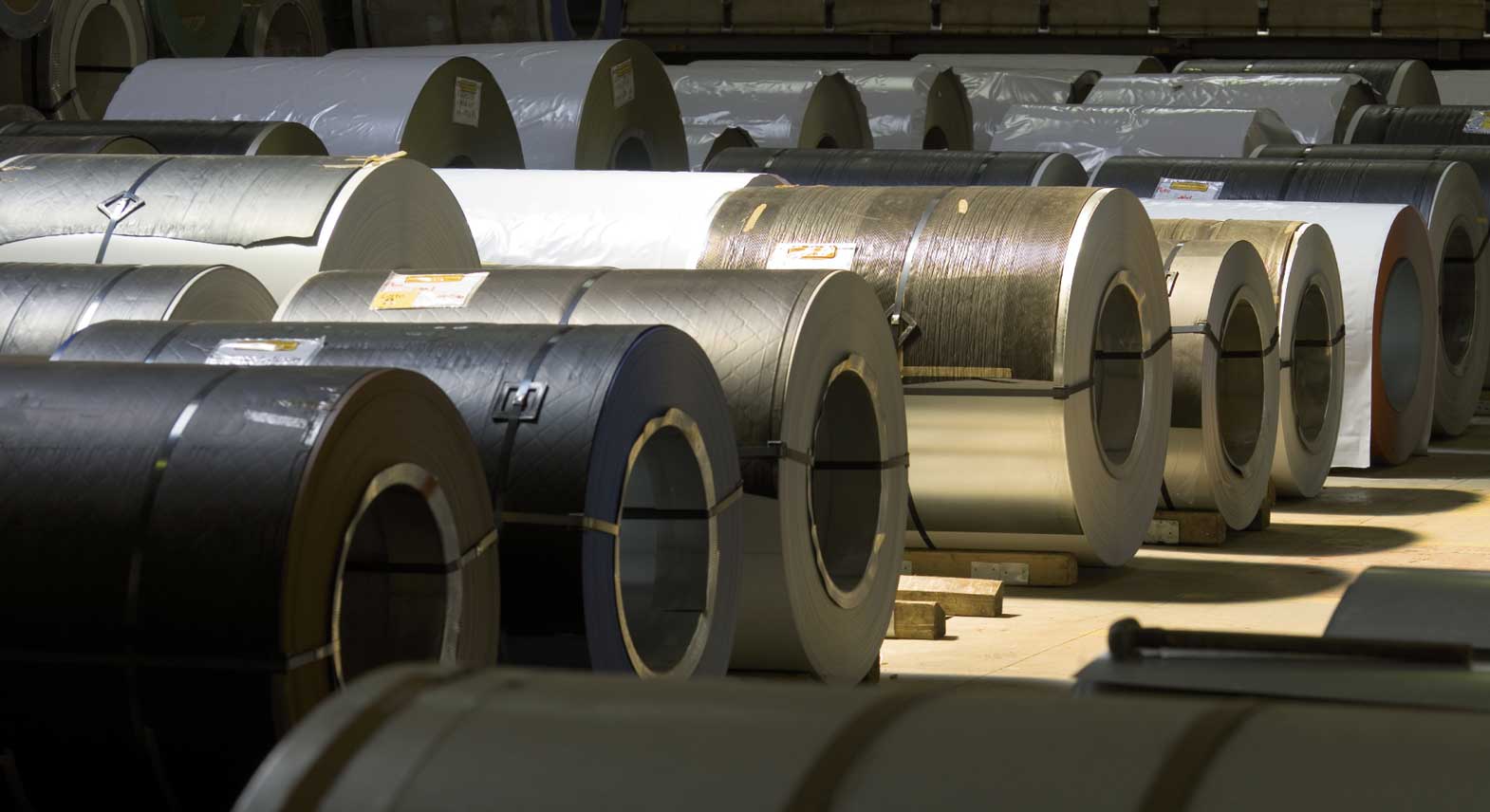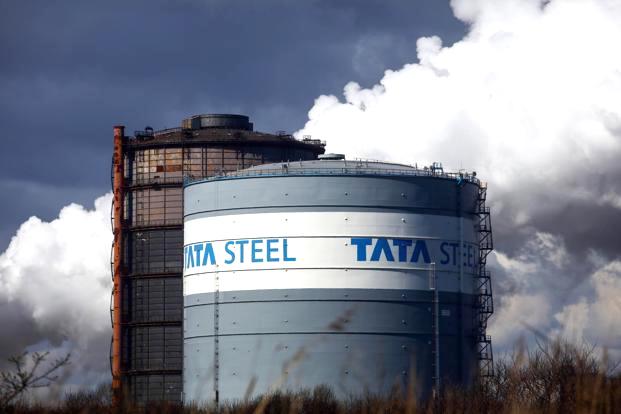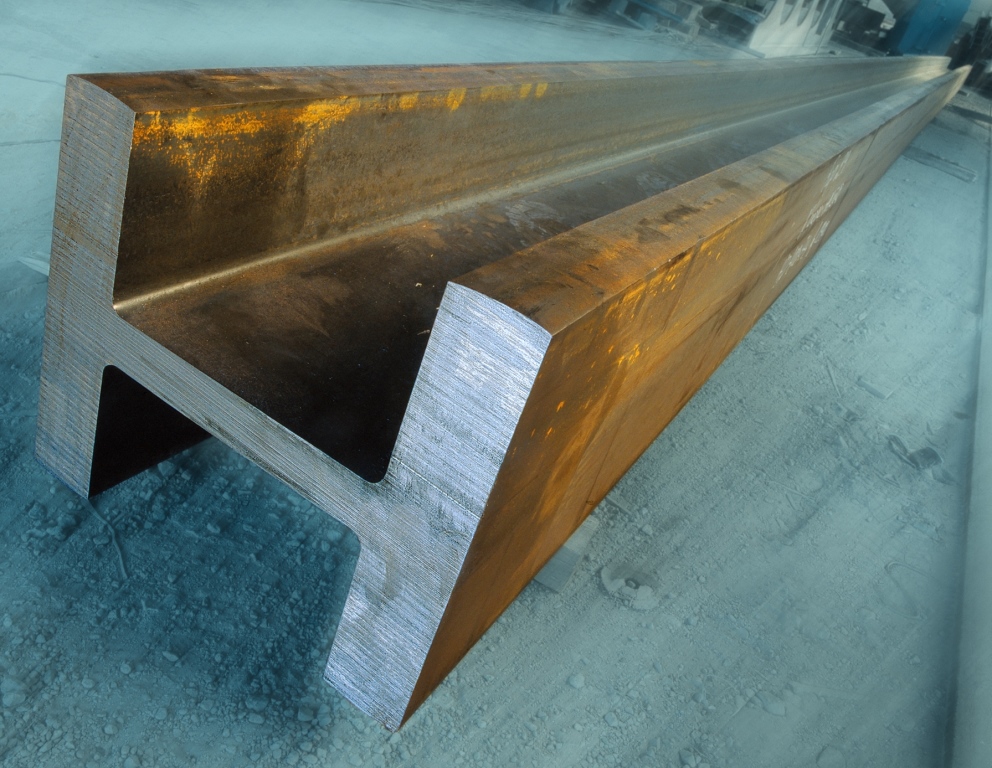
EU buyers seen treading cautiously in first quarter
Buyers, especially of coil products, will be cautious with placing orders in the first quarter of 2022 because they need to bring down current overstocks, according to a speaker at Tuesday’s Kallanish Flat Steel 2021 conference.
“Orders from steel service centres and tier 1/tier 2 suppliers at mills will be lower for a while because we need to get rid of our high stocks,” said Francios-David Martino. The chief executive of Europe’s largest service centre, Becker SSC in Germany, believes that this will occur through Q1 and into Q2.
Due to the shortage of semiconductor chips, call-offs for steel put aside for the automotive industry are 30% lower than planned, he detailed. Business in the first quarter will not be totally out of the ordinary, but “we will draw less from mills”, he said.
Becker SSC, based in Bönen, North Rhine-Westphalia, has a storing capacity of more than 100,000 tonnes, and these days is dealing with “double the volume we have normally”, Martino revealed. Even more pressuring is the burden on tied-up capital, as the extra volumes translate to “times the cash that is locked”, he explained.
His thoughts were picked up by Fernando Espada of European distributors federation Eurometal. Companies that have problems with tied-up capital “will stop buying simply because they cannot afford it anymore”, Espada added.
Christian Koehl Germany


Summer coil peaks could repeat in 2022
The hibernation of the automotive industry throughout the prevailing period of semiconductor shortages should come to an end next summer, which will then see a massive surge in demand and prices.
“As soon as auto is back we will see the level again as we saw in the summertime this year,” Fernando Espada of Eurometal said at the Kallanish Flat Steel 2021 conference held online on Tuesday. He was referring to the all-time peak of prices seen in mid-year, which has eased somewhat over the months since.
His view was supported by Alessandro Sciamarelli of Eurofer who believes that the disruption to the semiconductor supply chain will wane after the first quarter next year, and that demand will surge in the second half-year.
Francois-David Martino of service centre Becker SSC in Germany worded the scenario more drastically. “We will face huge demand from the OEMs as of June,” he predicted. Volkswagen, for example, “has a huge backlog of several 100,000 cars that cannot be produced now”.
Martino does not see imports on the horizon that could help in feeding that demand. In fact, he points to another factor of external trade that could play a role until then. As the EU and the USA are coming to terms to ease Section 232 measures, the EU’s transatlantic exports should rebound, and thus take away volumes from the domestic European market.
Christian Koehl Germany


High coil prices will stay: Kallanish conference
Steel prices will remain elevated even after the current downward correction in coil prices from the highs seen in summer, and could mean a new climate for steel pricing.
Francois-David Martino, chief executive of major service centre Becker SSC in Germany, says he does not see much price reduction from mills anymore, despite pressure from imports. At Tuesday’s Kallanish Flat Steel 2021 conference, he said he believes that “prices will remain high”. His assessment is in line with other market players.
Notably, the indicative price Martino gave for hot rolled coil – €900/tonne ($1,021) – is a good deal below prices quoted elsewhere in northwestern Europe. He did not specify if the figure applies only to integrated local northwestern integrated mills, or takes into account imports from in and outside the EU. Quite possibly, Becker SSC, together with its strong parent, Klöckner & Co, enjoys better offers for the volumes they buy.
Another speaker from the distribution sector, Fernando Espada of Eurometal, said “prices will be moving within a new and different range” in future. He noted that since the financial crisis of 2008/09, mill margins have not sustainably recovered, until this year. There will be a new level of prices, a “new equilibrium”, and adjustments to the pricing mechanism, he commented.
Christian Koehl Germany


US-EU deal, auto industry drive demand recovery
The new EU-US trade deal should lead to a normalisation of global trade flows and prices, said participants at the Kallanish Flat Steel 2021 virtual conference on Tuesday.
“The removal of US Section 232 should improve trade flows and improve European steel presence in the North American market. The new trade agreement will be very healthy for the steel sector and the EU economy,” EUROMETAL president Fernando Espada said during the event.
The global market and steel pricing equilibrium should also be supported by the absence of Chinese exports. “Steel prices will see certain fluctuations in the following months, but the cycle of volatility is seen coming to an end. Expected new offers, however, will not be the same as that in 2020,” Espada continued.
Espada believes the European steel market should return to normal by the second quarter in 2022, with the recovery of automotive industry production. “The normalisation of semiconductor supplies will boost car output, and consequently support the normalisation of steel sector demand. The post-Covid-19 situation is moving steel prices to a different range, following a new adjustment mechanism including additional costs and surcharges,” Espada explained.
Meanwhile, Eurofer director of economic and market analysis Alessandro Sciamarelli said the reopening of the US market for European steel will have a positive effect on the sector. “The positive effects will range from the establishment of fair trade, as it possible, to reducing the diversion of the steel flow,” he commented. “Demand is set to improve, so the US is an open gate for European steel.”
According to Sciamarelli, the worst of the economic recession is over, although growth in steel-consuming sectors will remain uncertain in Q1 2022. “Global supply chain bottlenecks and disruptions, as well as shortage of components, rising energy and transport costs impacting the manufacturing sector, and automotive in particular are not expected to ease substantially before Q1,” Sciamarelli predicted.
Inflation has gained ground and reached record highs in many advanced economies in August-September, which may trigger a serious concern in case Central Banks wanted to raise interest rates, he continued.
“The rise in interest rates should be avoided as public support schemes after the pandemic, such as NextGenEU, have created an enormous additional amount of public debt. Eurofer remains positive for 2022, although the market recovery will depend mostly on the macro-economic picture,” Sciamarelli concluded.
Todor Kirkov Bulgaria


SSAB, Autoliv to research green steel for auto safety products
Sweden-based steel producer SSAB and the world’s largest automotive safety supplier Autoliv have started a collaboration to research and develop fossil-free steel components for automotive safety products such as airbags and seatbelts, the two companies said in separate statements Nov 15.
“We are initiating a number of pilot projects together with Autoliv with the aim to reduce climate impact and strengthen competitiveness,” said Martin Lindqvist, president and CEO of SSAB.
Mikael Bratt, president and CEO of Autoliv, said the company was committed to becoming carbon neutral in its own operations by 2030 and “furthermore aim for net-zero emissions across our supply chain by 2040.”
“This means reducing our carbon emissions through use of renewable electricity in our own and supplier operations, improving energy and materials efficiency and adopting low carbon logistics and low carbon materials,” he said.
SSAB is one of the frontrunners among steel producers to cut CO2 emissions with the aim of supplying the market with fossil-free steel at a commercial scale in 2026, after a conversion of its Oxelösund blast furnaces into an electric arc furnace and by using HYBRIT technology.
SSAB, LKAB and Vattenfall created HYBRIT – Hydrogen Breakthrough Ironmaking Technology – in 2016, with the goal of developing a technology for fossil-free iron and steelmaking to eliminate CO2 emissions in steel production.
The technology replaces coking coal, traditionally used for iron ore-based steelmaking, with fossil-free electricity and hydrogen.
As reported by Platts, on August, SSAB showcased the first steel made of hydrogen reduced iron.
— Annalisa Villa


EU HRC in ‘wait-and-see’ mode with Q1 prices dependent on auto sector
The European HRC market showed further signs of stability Nov. 15, with prices in a stalemate amid automotive contract negotiations and fears of higher energy costs bolstering the bullish sentiment, sources told S&P Global Platts.
Despite the shortfall in automotive demand, European mills were trying to keep production running while also finalizing large volumes for lower prices, though market sources have said this was likely to cease in the new year once the semiconductor issues resolve.
A European mill source said he was already seeing positive signs for next year, with some major original equipment manufacturers announcing full schedules, suggesting greater production for first-quarter 2022.
“OEM schedules are promising – plants are running at full speed and there is a broader sense that the industry is improving,” the mill source said. “On the supply side, mills are willing to take the opportunity to do maintenance now that we’re managing the supply situation. We are optimistic for next year.”
The source said he was confident renewed automotive demand in Q1 would utilize the short-term overstocking many mills and distributors were currently trying to mitigate.
Ongoing problems with transport and packaging logistics, including a shortage of truck drivers in Germany and a scarcity in paper and wood, was also adding to the bullish sentiment as industry manufacturers remained severely hampered by these supply chain issues.
In the Italian market, a steel coils distributor was less expectant of higher prices for Q1, and instead cited prices for CRC and HDG around Eur20/mt lower than the current Italian spot market.
The source said he expected CRC prices to settle at Eur1,100/mt ex-works Italy and Eur10/mt higher for HDG. For HRC, Q1 prices were expected within Eur920-930/mt EXW Italy.
“They’ll be lucky to finalize at Eur920-930/mt for Q1 Italian market,” the distributor said. “We will continue to wait for beginning of next year. I have no confidence in final demand of the markets – there are some inquiries but not so much due to automotive call-offs.”
— Amanda Flint


Primetals sells Technologies Italy, reorganises long products
Primetals Technologies has transferred all its shares of Primetals Technologies Italy S.r.l., Marnate, to Callista Private Equity GmbH, a financial investor based in Munich, Germany.
As part of the transaction, Primetals Technologies Italy will be renamed to Pomini Long Rolling Mills S.r.l. (Pomini). The intellectual property of Primetals Technologies Italy is entirely transferred to Pomini, Kallanish learns. Primetals and Callista Private Equity have agreed to continue collaborating on certain types of long product rolling mills, WinLink plants, and in the field of mini-mills for long products on a project-by-project basis.
The group also announces it is bundling its in-house key product offerings for Long Rolling business under the lead of its two Centres of Competence (CoC). The one in Sutton, Massachusetts, USA, will focus on wire rod mills, bar in coil lines, combination mills including wire rod, bar in coil and straight bar outlet, high speed rebar mills, and nonferrous applications. The other one is the Electrics & Automation for Long Rolling Mills unit in Erlangen, Germany, supported by regional entities in Poland, Russia, India, China, and the USA.
In future, the WinLink technology – which directly links a high-speed caster to a high availability rolling mill for long products – will be owned by Primetals alone. Engineering, research and development, and project management for long rolling mills will be concentrated at Sutton, Massachusetts, the company adds.
Christian Koehl Germany


Tata Steel UK maintenance to spare deliveries
A Tata Steel spokesperson confirms the group is planning to carry out maintenance at some of its UK mills during December, but stresses this will not have an impact on customers.
Sources in the market suggest the maintenance will be carried out at the Port Talbot mill between 3 and 22 December. Kallanish understands two of the mills at the site will be under maintenance during that period, but the company does not expect this downtime to impact deliveries as they are part of planned annual operations.
The integrated Port Talbot site can produce up to 5 million tonnes/year of crude steel.
Emanuele Norsa Italy


European sections subject to speculation, says Salzgitter
Following high demand for sections in the first half-year, order bookings had markedly decreased by the end of September, Salzgitter observes.
In H1, demand was driven by restocking, but also by speculation about further price hikes. Since late summer, sections mills have had increasing difficulty securing utilisation, Kallanish learns from Salzgitter’s nine-month report. Notably, the company points out that real demand has actually not changed overall.
Salzgitter attributes this to speculative buying patterns, both of the stockholding steel distributors and of end consumers. “Many had assumed that the available volumes would become increasingly scarce, making it difficult to secure supplies, and that prices would continue to rise, prompted by stable demand,” it writes in the report.
This scenario did not play out, however, Salzgitter concludes. The reductions in inventory anticipated in August did not take place, and have not occurred in September either. Instead, inventory turnover remained at a weak level, with all manufacturers producing again after downtime in the summer, and delivering large volumes. This resulted in rising inventory levels at stockholders.
At Salzgitter, sections are combined in a business unit with heavy plate. The unit delivered 458,000 tonnes in total in the third quarter and 1.499 million tonnes in the first nine months. It lifted its revenue to €503 million ($576m), from €306m in Q3 2020, and returned to an Ebit of €19m, against a loss of €39m a year earlier.
Christian Koehl Germany


Chinese real estate confirms worst crisis since 2015
Data on China’s real estate sector in October was the weakest since the major contraction in 2015. Indicators of construction activity and house prices were all weak and the sector is expected to continue to weigh on steel demand, Kallanish notes.
Completed investment in real estate is still up 7.2% year-on-year to CNY 12.493 trillion ($1.98 trillion), according to the National Bureau of Statistics (NBS). That implies however that in October investment was down 5.4% y-o-y at CNY 1.237 trillion. Falling investment has come amid credit tightening and developers being forced to offload apartments at a discount.
Real estate sales by volume were up 7.3% y-o-y at 1.43 billion square metres over ten months, but in October they were down 21.7% y-o-y at 123.9 million sqm. Average prices also fell in October to CNY 9,749/sqm, the third consecutive month of decline and the lowest since April 2020. The NBS survey of 70 cities showed new house prices falling on-month in 52 cities, the most widespread decline since early 2015, when rebar prices fell to less than half their current level.
Weak prices and financing are likely to keep steel demand low for some time. Indicators of construction are all collapsing. New starts year-to-date are now down 7.7% at 1.667 billion sqm, with October new starts down 33.1% y-o-y at 137.92m sqm. Completions meanwhile are still up 16.3% y-o-y year-to-date at 572.9m sqm, as developers rush to market to raise cash to pay off their debts. Despite this, October saw completions drop 20.6% to 62.77m sqm as this strategy starts to run out of steam and developers seek to avoid collapsing prices further.
A very brief rebound in futures prices was triggered last Thursday on reports that China would allow developers more leeway in managing their debts by issuing bonds. China now faces a decision over how hard it can press the real estate sector without triggering a wider economic slump.


